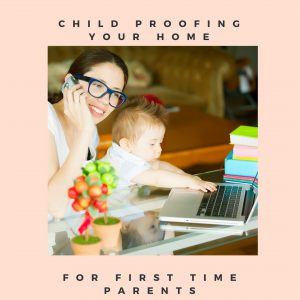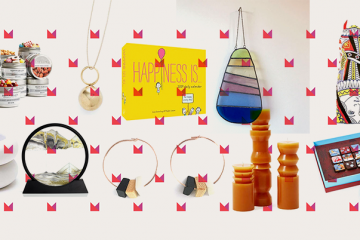Guest Post: A Guide to Child Proofing Your Home For First Time Parents

Those adorable baby photos showing the results of your curious child deciding to do something which no adult would ever have thought to do, they may look marvelous on social media, but in the real world a child’s insatiable desire to explore and have serious consequences – which fortunately you can prevent. There are lots of individual tricks you can use to this end, but they really boil down to five basic principles. So here is a guide to child proofing your home for first time parents to help you put them into practice.
Keep it out of reach
This is possibly the number one rule of child-proofing your home. If they can’t reach it, there’s nothing they can do with it. While they are small, elevated storage is your friend. Put as much as you can too high up for them even to see if possible and certainly too high up for them to grab.
Keep it secured
One of the first things you’ll discover as a new parent is that you’re going to need to balance your need to run your home in a practical manner, with your need to keep your child safe. For example, the space under the kitchen sink is often the most practical location for cleaning fluids, but a low cupboard is easily-accessible to children. The way to square this circle is to put a child-proof latch on it. Speaking of securing cupboards, check to see how secure your free-standing furniture is. Some of it may benefit from being fixed to the wall to stop a curious child from accidentally pulling it over on top of themselves.
Keep it soft
Your child is going to spend a lot of time on the floor, in fact when they reach the “learning-to-walk” stage, they’re going to spend a lot of time landing on the floor, hence soft flooring is the best option for them. If you’re renting, try putting down as many rugs as you can. Likewise put protectors on furniture with sharp edges, such as tables.
Keep it robust
Anything which gets anywhere near a child (or which a child could feasibly get anywhere near) needs to be either close to unbreakable or, if it does break, does so in a way which is unlikely to harm the child. Sometimes this is obvious, nobody is going to give a child a drink out of a crystal glass, sometimes it is less so, for example some pictures are framed behind standard glass whereas others are framed behind safety glass. The former either need to be reframed or kept well away from children.
Keep it behind a barrier
Baby-gates are the obvious example of a child-proof barrier and are the standard means of protecting stairs, but really they can be used anywhere they are needed, even on a temporary basis. For example, if one of you is cooking and the other is keeping an eye on the baby, then baby gates can be used to secure the kitchen while you work to stop your baby going to investigate what’s for dinner. Barriers can work in other ways too, for example you can place covers on knobs, such as those on cookers, to make them harder to turn and likewise place covers on electrical sockets when they are out of use. If cables and plugs stay in the same place most of the time, consider putting them behind a cover too.

Author Bio
Katie Eaton is a marketing consultant at children’s fashion brand Babaloo. Katie is passionate about creative writing and sharing her advice and experiences with other like-minded mothers.




No Comment